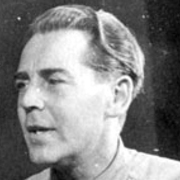
Bert Bridgman
Capturing scenery on film may sound like a life of cosy adventure, but it could also be hazardous, as Bert Bridgman discovered while filming in the remote Hollyford Valley. He became lost, dislocated his arm, and was without food for five days until found by some bushmen. He would face more deadly hazards when filming battlefronts in the Pacific as a war correspondent.
Herbert Howard Moulton (Bert) Bridgman was born in London in 1901, and learned about cinematography at Pathé Frères and Broadwest Films. After emigrating to New Zealand, he found work with the Government Publicity Office, which was preparing films for screening at 1924's British Empire Exhibition.
The main output of the GPO from late 1925 was the Know New Zealand First series of short scenic and industrial films, which included films shot by Bridgman like The Sea Hath Its Pearls (1927), about the oyster industry in Foveaux Strait, and In Days of Gold (1928), which recreated scenes of the Otago gold rush. His high point was filming the tour of the Duke and Duchess of York as official cinematographer.
When talkies hit New Zealand, Bridgman travelled to the United States to arrange for the purchase of a talkie camera. But when government filmmaking was curtailed in the economy drive brought on by the depression, he lost his job. He found work with short-lived company New Zealand Cinema Sound Films Ltd, and in 1931 filmed feature Hei Tiki on location at Lake Taupō for American producer Alexander Markey (the colourful story behind the film is recounted in documentary Adventures in Māoriland - The Making of Hei Tiki). Bridgman then joined Filmcraft Ltd at their Miramar film studios.
In 1936 the Miramar studios were taken over by the Tourist Department in 1936 and Bridgman was appointed chief cameraman. Production of government films began anew with a regular output of short films, many of them filmed or directed by Bridgman.
To mark New Zealand’s centennial, the studio also embarked on the production of a special feature. Bridgman was assigned to direct. Hampered by the outbreak of war, it wasn't completed until after the centennial celebrations had ended, but One Hundred Crowded Years (1941) still got a wide release. Two copies were given to the National Patriotic Fund Board. An extensive screening programme of matinees for school children and Sunday night public screenings netted hundreds of pounds to boost patriotic funds.
When the Government Film Studios was reorganised as the National Film Unit in this period, Bridgman continued his role as cinematographer, filming New Zealand’s war effort — both on the home front and, for a time, as a war correspondent in the Pacific. One shot he filmed of marching men became familiar to wartime picturegoers as part of the opening titles of the Weekly Review series. Bridgman made several trips to the islands, documenting the war in such films as RNZAF in the Pacific (1943) and Weekly Review No. 161 – Homecoming of Fiji's First Battalion (1944).
Before the war ended, he switched his attention to colour films. His first, City of Health (1944), chronicled the recovery of sick and wounded American servicemen, but most of his later films were scenic. In 1948 he was appointed the Film Unit's chief colour cameraman. He was behind the camera on the first NFU film shot on 35mm colour film, 1951's Lake Taupō - Paradise for Fishermen.
From 1953 to 1954 he was one of the team of cameramen on Royal New Zealand Journey (1954), a feature-length record in Eastmancolor, of the Queen’s first visit to this country. One of his final NFU films was another fishing tale, Passport to Pleasure.
Bert Bridgman died suddenly on 10 October 1954. He was 53.
Writing and original research by Clive Sowry; profile updated on 31 August 2020
Sources include
Stanhope Andrews, Close-Up of Guadalcanal (Wellington: The Progressive Publishing Society, 1944)
‘Found Adventure’ – New Zealand Truth, 12 December 1929, page 6
‘NZ Talkies. Wellington Producers. Rich Field to Work. Scenery and Maori Lore’ – The Dominion, 17 January 1931, page 6
‘Mr H H Bridgman’ (Obituary) –The Evening Post, 11 October, 1954, page 12
Memorial plaque, AAPG W3938, Archives New Zealand